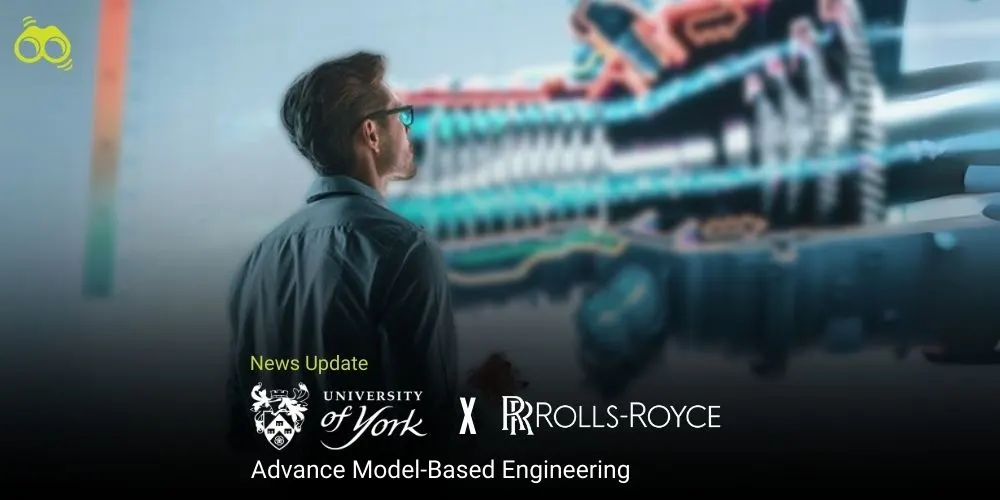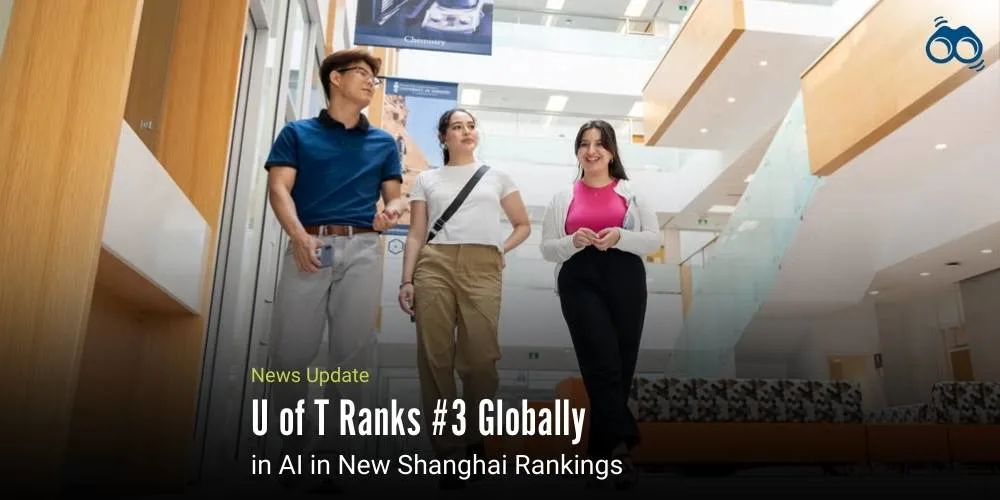York’s Software Engineering Research Strengthens UK Aerospace Innovation
University of York Showcases REF Success Through Aviation Engineering Partnerships
The University of York is well-recognised for its academic excellence and innovation, and is now going to play a key role in advancing aviation technology. Recently, the Department of Computer Science has teamed up with Rolls-Royce Control Systems to work on new ideas in aircraft engineering. Notably, the UK aerospace sector employs more than 100,000 people directly and more than 2 lakh people indirectly, which makes it one of the largest employment-generating sectors. The partnership between academia and industry is going to be supported by Knowledge Transfer Partnerships (KTPs), which help connect university research and innovation with current industry needs. As Rolls-Royce is widely recognised as a global leader in aircraft engineering and control systems, it needs advanced software tools to design, certify and deliver engine control and monitoring systems that meet the highest standards of safety assurance.
Given the increasing complexity of aerospace technologies, the university noted that model-based systems modelling and software design had become essential components of future development. In this context, the Department of Computer Science’s Automated Software Engineering group, with over two decades of expertise in model-based development, was said to have played a pivotal role. The group’s creation of Eclipse Epsilon, described as one of the world’s leading open-source frameworks for model management, was highlighted as a key asset in supporting Rolls-Royce’s software engineering ambitions.
The first KTP, which ran from 2018 to 2021, reportedly enabled Rolls-Royce to transition from proprietary modelling tools to a scalable, domain-specific, open-source collaborative engineering infrastructure. This infrastructure was integrated into a new environment known as CaMCOA Studio, designed to architect and deliver the software required for future engine control and monitoring systems. The university emphasised that this marked a significant advancement in both engineering practice and professional development across industry and academia.
Building on this foundation, the current KTP (2022–2025) is said to focus on transitioning CaMCOA Studio into a web-based platform. The University of York explained that this evolution is critical for next-generation power systems, where future engine controllers will operate across multiple distributed nodes and be developed by multi-skilled teams situated in various countries. This transition is expected to enhance collaboration, efficiency, and scalability in both software development and aircraft engineering. Furthermore, the university pointed out that both KTPs had contributed directly to a compelling REF 2021 case study, while also unlocking further research opportunities through major national programmes such as HICLASS (£15.4 million) and SCHEME (£22.4 million). Funded by UKRI via Innovate UK, these initiatives were said to demonstrate how business innovation models could be effectively applied to real-world aviation contexts, thereby improving software engineering practices.
It was also reported that Rolls-Royce had already utilised CaMCOA Studio for six years in the development of its latest Electronic Engine Controller (EEC) systems. These systems, which operate across multiple distributed nodes within aircraft engines, were described as a milestone in control systems engineering. The university added that future applications would demand further advancements in software engineering and systems modelling, particularly to support professional skills, career development, and international collaboration.
The University of York underscored that both KTPs exemplified the strength of academic–industry collaboration, especially within an engineering-focused institutional setting. Knowledge exchange between the university, Rolls-Royce, and the KTP Associates was said to have supported innovation, career pathways, and professional development in aerospace engineering. Moreover, the university indicated that its expertise in software engineering and model-based development had proven instrumental in helping Rolls-Royce maintain its position at the forefront of aviation technology. These initiatives illustrate how strategic university–industry partnerships can directly shape innovation, skills development, and engineering excellence in the UK aviation sector.
Editor’s Note:
The University of York and Rolls-Royce Control Systems share a long-standing partnership, highlighted by two significant Knowledge Transfer Partnerships (KTPs). These collaborations are dedicated to advancing software engineering within the aviation sector. The university’s Department of Computer Science has played a central role, drawing on over twenty years of expertise in model-based development and open-source tools such as Eclipse Epsilon. These efforts have supported Rolls-Royce in designing and delivering safe, advanced software for engine control systems. The first KTP (2018–2021) helped Rolls-Royce shift from closed modelling tools to a scalable, open-source engineering platform called CaMCOA Studio. The current KTP (2022–2025) is building on this by developing a web-based version of the platform to support global collaboration and next-generation aircraft systems. These projects have not only strengthened industry–university ties but also contributed to national research programmes like HICLASS and SCHEME, funded by UKRI. Together, the KTPs show how academic research can directly support business innovation, professional development, and real-world engineering challenges.
According to Skoobuzz, the University of York’s work with Rolls-Royce demonstrates the value of knowledge exchange in shaping the future of aviation software and systems.
FAQs
1.How is the University of York working with Rolls-Royce on model-based engineering?
The University of York is collaborating with Rolls-Royce through two major knowledge transfer partnerships. These projects have helped Rolls-Royce shift from closed modelling tools to an open-source platform called CaMCOA Studio. The university’s expertise in model-based development supports software design for future aircraft control systems.
2.What role does software development play in aerospace engineering?
Software development is essential in aerospace engineering. It enables the design, control, and monitoring of aircraft systems. Engineers use software to simulate performance, manage real-time operations, and ensure safety and compliance with aviation standards.
3.How does model-based engineering improve aircraft engineering?
Model-based engineering improves aircraft design by using digital models to test and refine systems before building physical prototypes. It reduces errors, shortens development time, and helps teams collaborate more effectively across disciplines.
4.What is systems modelling in engineering?
Systems modelling involves creating structured representations of how different parts of a system interact. It helps engineers understand performance, identify risks, and optimise design, especially in complex fields like aerospace and automotive engineering.
5.Why is the University of York known for software engineering research?
The University of York is recognised for its strong research in software engineering, particularly in model-based development and automated systems. Its Department of Computer Science has developed widely used tools and maintains long-standing partnerships with industry leaders such as Rolls-Royce.
6.How do knowledge transfer partnerships benefit engineering universities?
Knowledge transfer partnerships link academic research with industry needs. They bring funding, support innovation, and create career opportunities for students and researchers. These partnerships also help universities demonstrate the real-world impact of their work.
7.What professional skills are needed in software and engineering careers?
Careers in software and engineering require skills such as programming, systems thinking, problem-solving, and teamwork. Professionals also need to understand development methods, use simulation tools, and adapt to new technologies like artificial intelligence and cybersecurity.














0 Comments (Please Login To Continue)